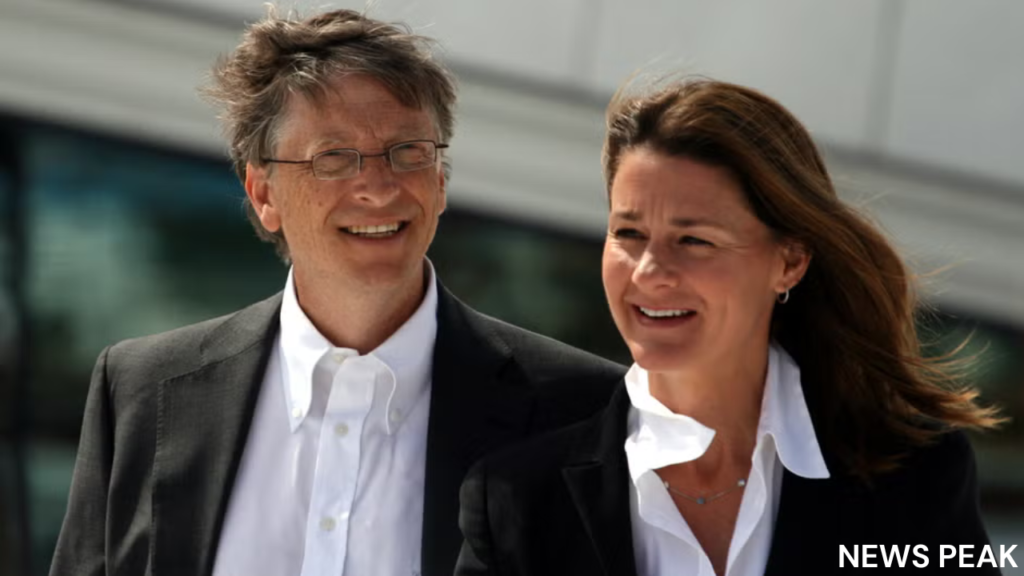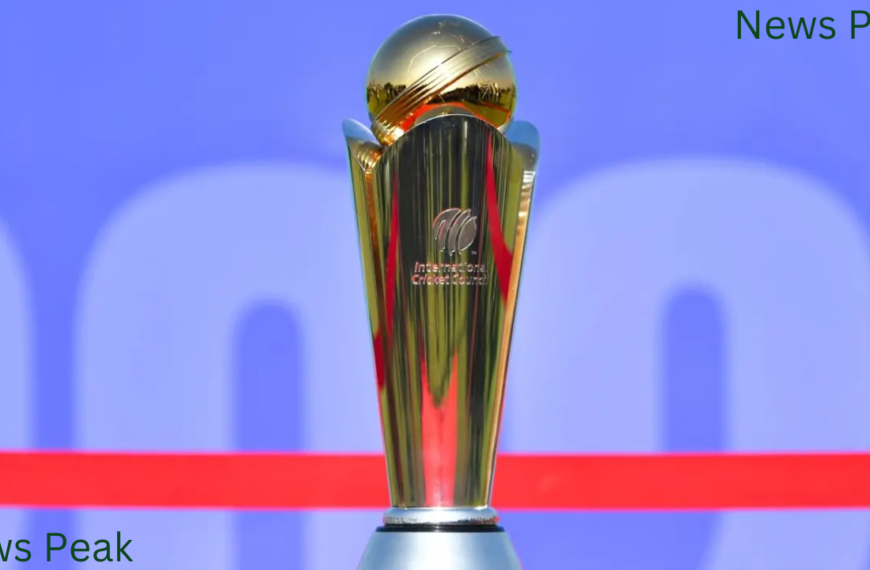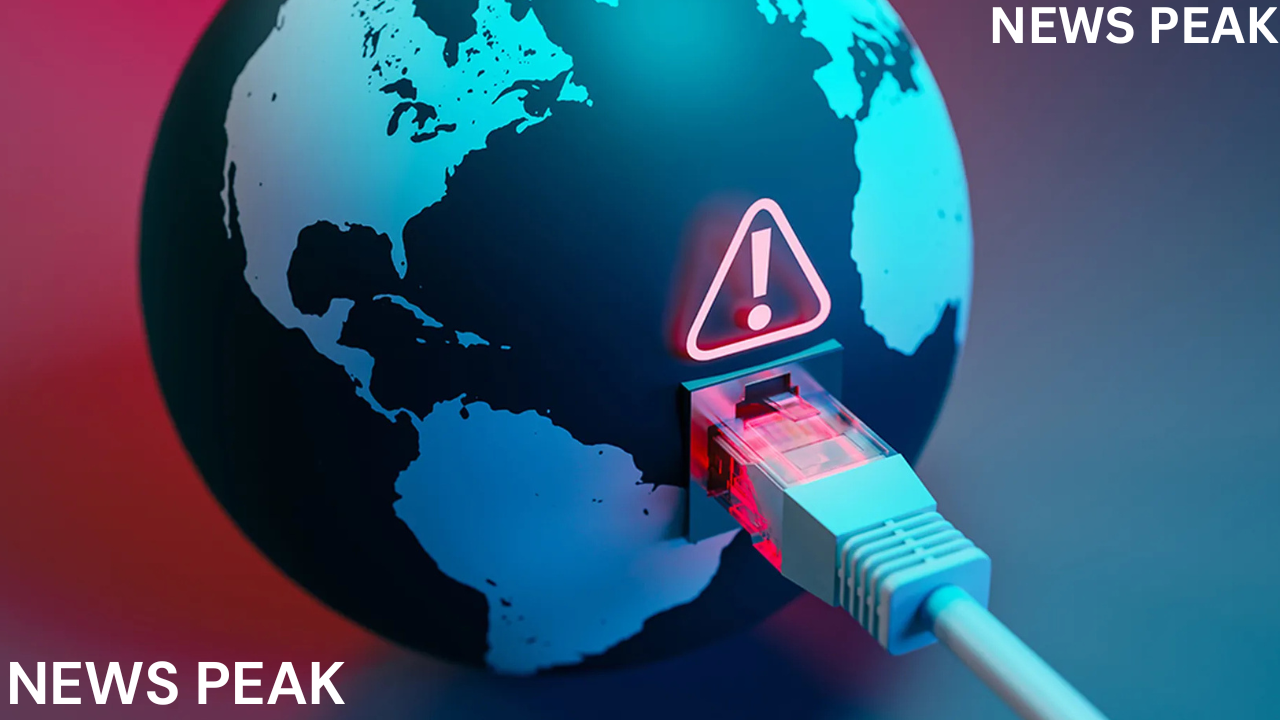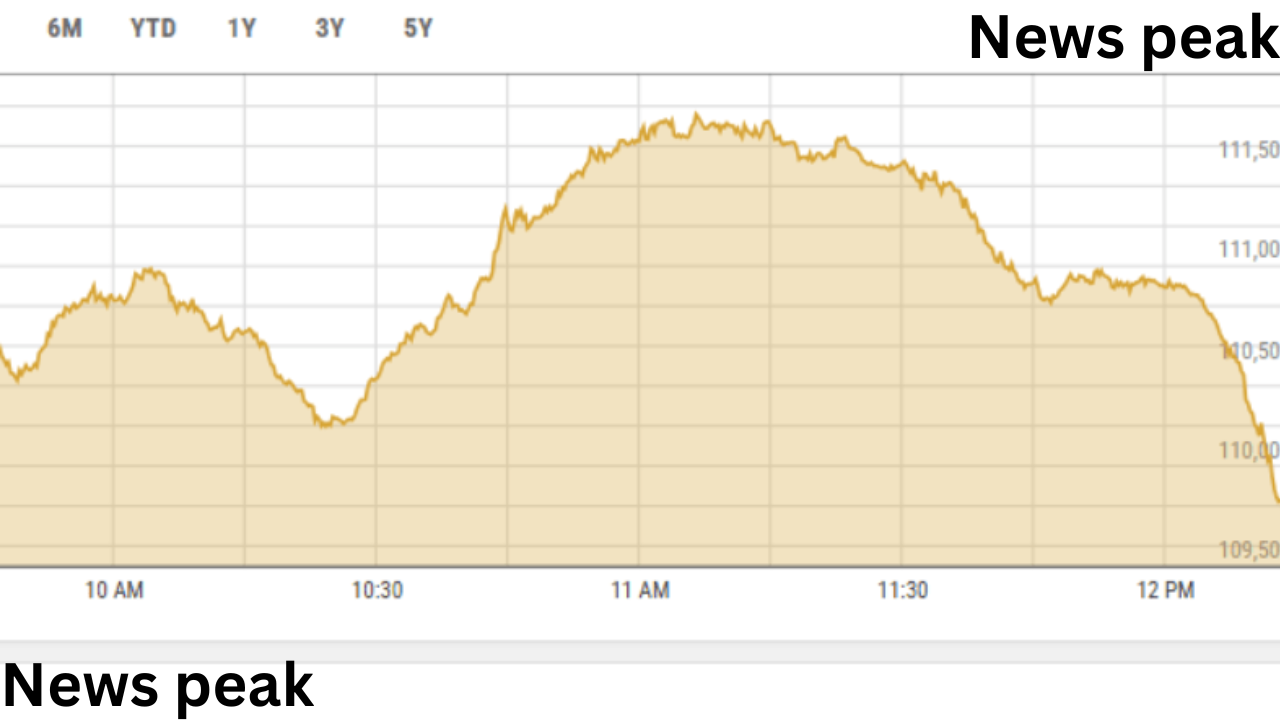
Entrepreneur Bill Gates founded the world’s largest software business, Microsoft, with Paul Allen, and subsequently became one of the richest men in the world.
(1955-)
Who Is Bill Gates?
Through technological innovation, astute business strategy, and aggressive commercial methods, Microsoft—the largest software company in the world—was founded and built by entrepreneur and businessman Bill Gates and his business partner Paul Allen. Gates becomes the one of the world’s wealthiest men as a result. In order to concentrate on his charity endeavors at the Bill and Melinda Gates Foundation, Gates declared in February 2014 that he was leaving his position as chairman of Microsoft.
Early Life
On October 28, 1955, Gates was born William Henry Gates III in Seattle, Washington. Gates and his younger sister, Libby, and older sister, Kristianne, were raised in an upper-middle-class household. When their father, William H. Gates Sr., first met his future wife, Mary Maxwell, he was a bright but reserved law student. At the University of Washington, she was an athletic, gregarious student who was heavily involved in leadership and student affairs.
All three children were encouraged to be competitive and pursue greatness in the welcoming and intimate Gates family environment. When Gates organized family sports events at their Puget Sound vacation home, he demonstrated early competitiveness. He also enjoyed playing board games, especially Risk, and was very good at Monopoly.
After a brief stint as a teacher, Gates’ mother, Mary, dedicated her time to raising the children, working on charitable causes, and participating in civic affairs. The two had a close relationship. She also held positions on the boards of a number of corporations, including International Business Machines (IBM), the United Way, and Seattle’s First Interstate Bank, which her family had founded. When she served at neighborhood organizations and schools, she frequently brought Gates along.
Education
When Gates was younger, he read a lot and would spend hours looking through reference materials like encyclopedias. When Gates was eleven or twelve years old, his parents started to worry about his behavior. His parents were concerned that he would turn into a recluse because he was performing well in school but occasionally appeared bored and introverted.
When Gates aged 13, his parents put him at Seattle’s prestigious preparatory Lakeside School, despite their strong support for public education. In almost every subject, he flourished, performing exceptionally well in science and math but also in drama and English.
A Seattle-based computer company volunteered to give the pupils computer time while they were attending Lakeside School. A teletype terminal for student usage was purchased by the Mother’s Club using the money raised from the school’s rummage sale. Gates spent a large portion of his leisure time working on the terminal after becoming enthralled with what computers could accomplish. He created a game of tic tac toe that people could play against the computer using the BASIC programming language.
In 1973, Gates received his Lakeside diploma. He talked about his academic prowess for years when he introduced himself to new people, claiming to have scored 1590 out of 1600 on the college SAT.
Harvard Dropout
In the fall of 1973, Gates enrolled at Harvard University with the intention of becoming a lawyer. In 1975, Gates left college to establish his business, Microsoft, with partner Allen, much to the dismay of his parents.
Gates spent less time in class and more time in the computer lab. He didn’t really follow a study schedule; he slept for a few hours, studied hard for an exam, and passed with a respectable grade.
Meeting and Partnering With Paul Allen
While attending Lakeside School for high school, Gates got to know Allen, who was two years his senior. Despite being extremely different individuals, the two quickly became friends because they shared a passion for technology. Allen was more timid and hesitant. Gates was fierce and sometimes aggressive.
Despite their disagreements, Allen and Gates collaborated on programs for a large portion of their leisure time. The two would sometimes argue and fight over who should be in charge of the computer lab or who was correct. Allen once banned Gates from the computer lab when their quarrel got out of hand.
At the age of 15, Gates and Allen founded their company in 1970 and created “Traf-o-Data,” a computer program that tracked Seattle traffic patterns. For their efforts, they were paid $20,000. Gates’ parents wanted him to complete school and attend college in the hopes that he would work toward becoming a lawyer, but Gates and Allen intended to launch their own business.
Although the two remained in contact, Allen attended Washington State University and Gates attended Harvard. Allen left college after two years and relocated to Boston, Massachusetts, where he worked for Honeywell. He showed Gates an article about the Altair 8800 mini-computer kit from an issue of Popular Electronics magazine at this time. The potential that this computer could bring to the realm of personal computing captivated both young men.
Micro Instrumentation and Telemetry Systems (MITS), a tiny business in Albuquerque, New Mexico, manufactured the Altair. Declaring that they were developing a BASIC software program to operate the Altair computer, Gates and Allen reached out to the business.
Ed Roberts, the president of MITS, invited the youngsters to participate in a demonstration. Over the course of the following two months, Gates and Allen frantically wrote the BASIC program at Harvard’s computer lab. Having never tested it on an Altair computer, Allen traveled to Albuquerque for a test run at MITS. It was a perfect success. Gates quickly left Harvard to work with Allen after he was employed at MITS. They co-founded Microsoft.
After receiving a Hodgkin’s disease diagnosis in 1983, Allen continued to work at Microsoft. After a year of rigorous therapy, Allen’s cancer went into remission, yet he still left the company. There are several rumors about Allen’s departure from Microsoft. Many say it was a transformative event for Allen and Gates, while others claim Gates forced him out.
Founding Microsoft
Gates and Allen founded Micro-Soft in 1975, combining the terms “micro-computer” and “software” (they quickly removed the hyphen). BASIC software for the Altair computer was the company’s initial offering.
It wasn’t always easy at first. Despite earning a fee and royalties, Microsoft’s BASIC software for the Altair computer was not covering its overhead. Only roughly 10% of the Altair computer’s BASIC users had actually paid for it, according to Gates’ later account.
Computer hobbyists were big fans of Microsoft’s BASIC software, which they acquired pre-market versions of and used for free reproduction and distribution. Many people who were interested in personal computers at the time weren’t motivated by financial gain. They believed that sharing software with friends and other computer enthusiasts was made possible by its simplicity of reproduction and distribution. Gates had a different idea. Particularly when it came to software designed for sale, he considered the free distribution of software to be theft.
Gates stated in an open letter to computer enthusiasts in February 1976 that the ongoing usage and distribution of software without payment would “prevent good software from being written.” Software piracy would essentially deter developers from devoting time and resources to producing high-quality software. Although the letter did not sit well with computer aficionados, Gates remained true to his principles and would defend himself against accusations of unethical business practices by citing the threat of innovation.
Gates and Ed Roberts, the president of MITS, had a tense relationship that frequently resulted in yelling matches. Roberts and the combative Gates disagreed on software development and the company’s course. Roberts thought Gates was pampered and annoying.
After selling MITS to a different computer business in 1977, Roberts returned to Georgia to pursue his medical degree and become a doctor.
Allen and Gates were left alone. To keep the software rights they had created for Altair, the two had to file a lawsuit against the new MITS owner. In early 1979, Gates relocated Microsoft’s offices to Bellevue, Washington, which is located just east of Seattle, and the business began writing software in various forms for other computer companies.
Gates poured himself into his job, happy to be back in the Pacific Northwest. Each of the new company’s 25 employees was responsible for a wide range of tasks, including marketing, business growth, product development, and operation.
Even though the business had a rough beginning, Microsoft was making about $2.5 million by 1979. Gates identified himself as the company’s ceo at the age of 23. He oversaw the business and served as its spokesperson thanks to his expertise in software development and astute business sense. Every line of code that the company supplied was examined by Gates personally, and he frequently rewrote code when he felt it was needed.
IBM PC Software from Microsoft
Gates was constantly on the road promoting the benefits of Microsoft software while the computer industry expanded and businesses like Apple, Intel, and IBM developed hardware and components. He frequently brought his mother along. Mary had connections and was well-liked by her peers on a number of company boards, including IBM’s. Gates first met the IBM CEO through Mary.
IBM approached Microsoft in November 1980 in search of software to run their future personal computer (PC). According to legend, Gates was asked to serve coffee at their first encounter because an IBM employee thought he was an office assistant.
Despite his youthful appearance, Gates immediately won IBM over by demonstrating that he and his business could satisfy their requirements. Microsoft’s failure to create the foundational operating system needed to run IBM’s new systems was the only issue.
Not to be deterred, Gates purchased an operating system designed to run on IBM PC-like systems. He struck a contract with the software creator, keeping the IBM deal a secret while establishing Microsoft as the program’s only licensing agency and eventual complete owner.
Later, the business sued Gates and Microsoft for hiding crucial information. Neither Gates nor Microsoft acknowledged any wrongdoing, but Microsoft reached an out-of-court settlement for an unknown sum.
To make the recently acquired software compatible with the IBM PC, Gates had to modify it. He charged $50,000 for it, the same amount he had paid for the original program. IBM would have had the opportunity to purchase the source code, which would have Instead, Gates suggested that IBM pay a licensing fee for copies of the software that were sold with their computers, but Gates declined. By doing this, Microsoft made it possible for any other PC maker to license its software, known as MS-DOS, in the event that other computer companies decided to copy the IBM PC, which they soon did. Additionally, Microsoft released software called Softcard that made it possible for Apple II computers to run Microsoft BASIC.
After creating software for IBM, Microsoft’s growth took off between 1979 and 1981. Revenue soared from $2.5 million to $16 million, while staff grew from 25 to 128 employees. Gates was named president and chairman of the board after he and Allen formed Microsoft in the middle of 1981. The executive vice president title was given to Allen.
Microsoft was expanding internationally by 1983, opening offices in Japan and Great Britain. Its software was used by an estimated 30% of PCs worldwide.
Competition With Steve Jobs
Apple and Microsoft shared many of their early innovations, despite their legendary rivalry. Microsoft was asked to assist in the development of software for Macintosh computers by Apple, which was then headed by Steve Jobs, in 1981. Some developers contributed to the creation of Microsoft as well as Microsoft Macintosh programs. The cooperation was evident in the names that the Macintosh and Microsoft systems shared.
Microsoft created Windows, a system that displayed text and images on the screen and was controlled by a mouse, as a result of this knowledge exchange. This was very different from the MS-DOS system, which was based on text and keyboard and displayed all formatting on the screen as code rather than the actual text that would be printed.
Gates saw right away the danger that such software could have to MS-DOS and Microsoft in general. The competing VisiCorp software’s graphic artwork would be considerably easier to use on a Macintosh machine for the unsophisticated user, which made up the majority of the purchasing public.
In a marketing campaign, Gates declared that a new Microsoft operating system with a graphical user interface was on the horizon. Known as “Windows,” it was intended to work with all PC software programs created on the MS-DOS platform. Since Microsoft had no such software in development, the announcement was a bluff.
It was a brilliant marketing strategy. The MS-DOS operating system was used by over 30% of computers, and they would prefer wait for Windows software than switch to a new one. By early 1985, the VisiCorp system had lost its impetus because software providers were reluctant to create products for it unless users were prepared to switch formats.
In the past, when Apple was working on making Microsoft goods compatible with Apple computers, it granted Microsoft complete access to their technologies. Apple disregarded Gates’ advice to license their software since they were more focused on making computers.
Gates once more made the most of the circumstance by developing a software format that was remarkably comparable to the Macintosh. Microsoft responded to Apple’s lawsuit threat by stating that it would postpone the delivery of its Macintosh software that is compatible with Microsoft.
Ultimately, the courts ruled in favor of Microsoft. It might demonstrate that although the two software systems functioned similarly, each feature was very different.
A Competitive Reputation
Even with Microsoft’s prosperity, Gates never felt completely safe. Gates developed a fierce drive and spirit of rivalry, constantly keeping an eye on his rivals. When Gates’ assistant arrived at work early, they discovered a person dozing off beneath a desk. When she realized it was Gates, she thought about phoning the police or security.
Because of his brilliance, Gates was able to see every aspect of the software business, from corporate strategy to product development. He created a profile of every potential scenario and went through them, asking questions about anything that might occur, in order to analyze any company move.
He anticipated that all employees would be equally committed. In order to maintain the creative process, he would confront staff members and their ideas, which led to his combative management style being legendary. Gates might say, “That’s the stupidest thing I’ve ever heard!” to an unprepared presenter.
This was a test of Gates’ enthusiasm for his business as much as it was of the employee’s rigor. He was always assessing if those around him were truly persuaded by their beliefs.
Lawsuits Against Microsoft Office and Anti-Competition
Gates was becoming known as a vicious rival outside the corporation. To replace MS-DOS, a number of tech firms, led by IBM, started creating their own operating system, known as OS/2. Instead of caving in to the pressure, Gates continued to develop the Windows program, making it more functional and extending its applications.
Microsoft Office, which combined office productivity programs like Word and Excel into a single system that worked with all Microsoft products, was first released by Microsoft in 1989.
The OS/2 compatibility of the programs was less straightforward. In just two weeks, Microsoft’s new version of Windows sold 100,000 copies, and OS/2 quickly became obsolete. As a result, Microsoft essentially controlled the market for PC operating systems. The Federal Trade Commission soon started looking into Microsoft.
Microsoft was the subject of numerous Justice Department and Federal Trade Commission investigations during the 1990s. According to several related claims, Microsoft unfairly negotiated with computer makers who gave their PCs the Windows operating system. Microsoft was also accused of pressuring computer manufacturers to offer Internet Explorer in exchange for selling Windows as an operating system.
Microsoft was once in danger of splitting its two businesses, software development and operating systems. Microsoft defended itself by stating that such limitations were a threat to innovation and referencing Gates’ past conflicts with software piracy. In order to prevent a split, Microsoft was eventually able to reach a settlement with the federal government.
Throughout it all, Gates came up with creative tactics to counteract the pressure, such as humorous ads and public appearances at computer trade shows where he pretended to be Mr. Spock from Star Trek. Throughout the 1990s, Gates managed the business and withstood the federal probes.
Leaving Microsoft
Steve Ballmer, a college acquaintance who had worked for Microsoft since 1980, took over as CEO in 2000 when Gates resigned from the day-to-day management of the company. Although he continued to serve as the board chairman, Gates positioned himself as chief software architect to focus on what he considered to be the more exciting aspect of the company.
Gates declared in 2006 that he was leaving his full-time position at Microsoft in order to spend more time with the foundation. June 27, 2008, was his last full day at Microsoft.
Gates left his role as Microsoft chairman in February 2014 to take a new role as a technical consultant. The 46-year-old Satya Nadella took over as CEO of Microsoft, replacing longtime Steve Ballmer.

Personal Life
Gates, who was 32 at the time, became interested in Melinda French, a 23-year-old Microsoft product manager, in 1987. Gates was ideally matched with Melinda, who was extremely intelligent and well-organized. As they found a close and intellectual connection, their friendship gradually deepened. Melinda and Gates were married in Hawaii on January 1, 1994.
They took some time off in 1995 to travel and gain a fresh outlook on life and the world after his mother passed away tragically from breast cancer a few months after they were married. Jennifer, their first daughter, was born in 1996. 1999 saw the birth of their son, Rory, and 2002 saw the arrival of their second daughter, Phoebe.
In May 2021, the couple declared their divorce.
Personal Wealth
Gates became an immediate millionaire at the age of 31 when he took Microsoft public in March 1986 with an IPO of $21 per share. At the time, Gates owned $234 million of Microsoft’s $520 million, or 45 percent of the company’s 24.7 million shares.
The value of the company’s shares rose over time, and it split multiple times. When the stock reached $90.75 a share in 1987, Gates became a billionaire. Ever since, Gates has consistently been at the top, or very close to the top, of Forbes’ annual list of the 400 richest Americans. Gates’ wealth momentarily exceeded $101 billion in 1999, when stock prices were at an all-time high and the shares had split eightfold since its initial public offering.
Home
Gates and his family relocated to a 55,000-square-foot home on the Lake Washington beach in 1997. According to reports, the couple and their three kids find the residence, which doubles as a business center, to be rather comfortable.
The Foundation of Bill and Melinda Gates
The William H. Gates Foundation was founded in 1994 by Bill and Melinda Gates with the goals of promoting global health, education, and investments in underdeveloped areas worldwide. The group also addresses domestic concerns, such assisting American students in preparing for college.
Because to Melinda, Bill had studied the charitable endeavors of American industrial giants Andrew Carnegie and John D. Rockefeller and developed an interest in following in his mother’s footsteps as a civic leader. He understood that he had a duty to donate a larger portion of his fortune to charitable causes.
The Bill & Melinda Gates Foundation was established in 2000 when the pair merged multiple family charities and contributed $28 billion. Over the ensuing years, Bill’s time and interest were largely consumed by his work with the Bill & Melinda Gates Foundation.
Gates has dedicated a significant portion of his time and efforts to the work of the Bill & Melinda Gates Foundation since leaving Microsoft. Gates advocated for charter schools and national Common Core standards for grades K–12 in 2015. Around this same period, the foundation declared that it will provide its staff with a year of paid leave following the birth or adoption of a child, further demonstrating Gates’ innovative employment practices.
The organization released the first of what would eventually become its yearly “Goalkeepers” report in 2017, which examined advancements in a number of significant public health domains, such as HIV, child mortality, and malnutrition. According to Gates, the two most pressing public health issues that needed to be addressed in the ensuing ten years were infectious and chronic diseases.
Gates revealed in April 2018 that he and Larry Page, a co-founder of Google, would be collaborating to raise $12 million for a universal flu vaccine. According to him, the money will be given out as grants of up to $2 million for “bold and innovative” individual efforts with the goal of starting clinical trials by 2021. While others doubted that $12 million would be sufficient to ignite
Alzheimer’s Research
In November 2017, Gates announced that he was contributing $50 million of his personal funds to the Dementia Discovery Fund. He would then contribute an additional $50 million to start-up businesses engaged in Alzheimer’s research. Gates, who has witnessed the terrible consequences of the illness on his own family members, reportedly views it as a personal problem.
“Any type of therapy would be a huge advance from wherever we are today,” he told CNN. He continued, “the ultimate objective has got to be cure.”
Arizona’s ‘Smart City’ construction
It was disclosed in 2017 that one of Gates’ companies had contributed $80 million to the creation of a “smart city” close to Phoenix, Arizona. Designed around high-speed digital networks, data centers, new manufacturing technologies and distribution models, autonomous vehicles, and autonomous logistics hubs, the proposed city, Belmont, will “create a forward-thinking community with a communication and infrastructure spine that embraces cutting-edge technology,” according to real estate investment group Belmont Partners.
According to reports, 3,800 acres of the almost 25,000 acres of land set aside for the site will be used for office, commercial, and retail space. Public schools will occupy an additional 470 acres, freeing up space for 80,000 residential units.
Coronavirus
With the emergence of the new coronavirus in 2020, Gates’ dire predictions that the world was unprepared for the next pandemic finally came to pass. The Wellcome Trust, Mastercard, and the Bill and Melinda Gates Foundation pledged $125 million in March to help stop the outbreak, and Gates later said his foundation was willing to spend billions of dollars to construct factories dedicated to vaccine development.
Awards
For his charitable endeavors, Gates has won multiple honors. Gates was listed as one of the 20th century’s most important figures by Time magazine. Along with Bono, the lead singer of the rock band U2, Gates and his wife Melinda were also selected the magazine’s 2005 Persons of the Year.
Gates is the recipient of multiple honorary doctorates from international universities. In 2005, Queen Elizabeth II knighted him as an honorary Knight Commander of the Order of the British Empire.
The Mexican government honored Gates and his spouse with the Order of the Aztec Eagle in 2006 for their global health and education charity endeavors.
The pair received additional recognition for their charitable endeavors in 2016 when they were honored.
- IMMEDIATE FACTS
- Bill Gates is his name.
- Year of Birth: 1955
- Date of birth: October 28, 1955
- State of Birth: Washington
- Seattle is the birthplace.
- Country of Birth: United States
- Male gender
- Most Famous For: Entrepreneur Together with Paul Allen, Bill Gates created Microsoft, the biggest software company in the world, and went on to become one of the wealthiest individuals in the world.
- Internet/Computing Industries, Education, and Academics
- Sign of the Astrology: Scorpio Schools
- The Lakeside School
- Harvard University
- Interesting Information
- One of the wealthiest guys on the planet is Bill Gates.
- In order to start Microsoft with his friend Paul Allen, Bill Gates left Harvard.
- In order to concentrate on his humanitarian endeavors at the Bill and Melinda Gates Foundation, Gates resigned as chairman of Microsoft in 2014.
CITATION INFORMATION
- Article Title: Bill Gates Biography
- Author: Gofad.xyz Editors
- Website Name: The NEWSPEAK website
- Access Date:
- Publisher: A&E; Television Networks
- Last Updated: May 3, 2021
- Original Published Date: 12-29-2024
QUOTES
- Success is a lousy teacher. It seduces smart people into thinking they can’t lose.
- Be nice to nerds. Chances are you’ll end up working for one.
- Bill is basically unimaginative and has never invented anything, which I think is why he’s more comfortable now in philanthropy than technology. He just shamelessly ripped off other people’s ideas.
- We are all created equal in the virtual world, and we can use this equality to help address some of the sociological problems that society has yet to solve in the physical world.
- I’m a big believer that as much as possible, and there’s obviously political limitations, freedom of migration is a good thing.
- If you show people the problems and you show people the solutions they will be moved to act.
- Like almost everyone who uses e-mail, I receive a ton of spam every day. Much of it offers to help me get out of debt or get rich quick. It would be funny if it weren’t so irritating.
- I believe that computers are the most incredible tool we can use to feed our curiosity and inventiveness—to help us solve problems that even the smartest people couldn’t solve on their own.
- I’ve always been an optimist and I suppose that is rooted in my belief that the power of creativity and intelligence can make the world a better place.
- If being a geek means you’re willing to take a 400-page book on vaccines and where they work and where they don’t, and you go off and study that and you use that to challenge people to learn more, then absolutely. I’m a geek.
- It’s a nice reader, but there’s nothing on the iPad I look at and say, ‘Oh, I wish Microsoft had done it.’
- The technology business has a lot of twists and turns. Probably the reason it’s such a fun business is that no business gets to rest on its laurels.








